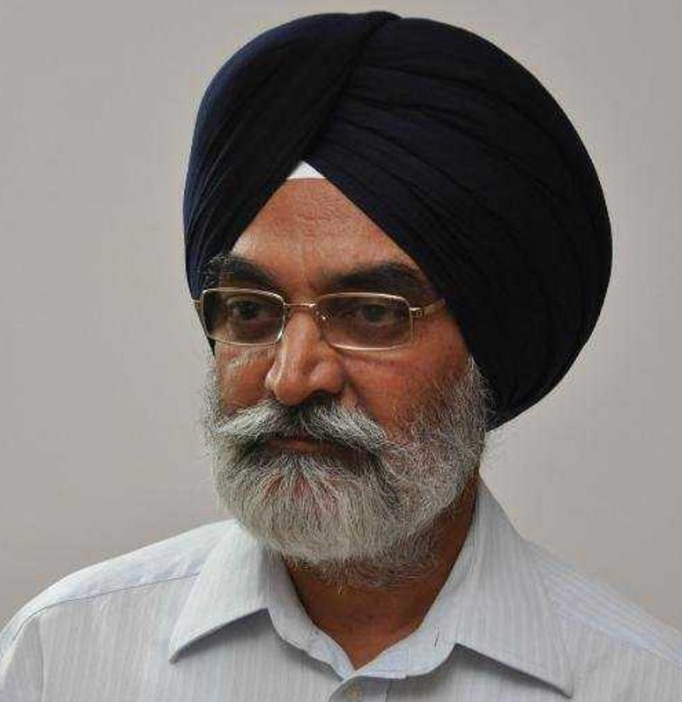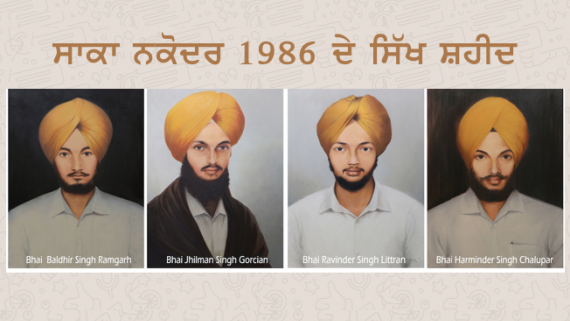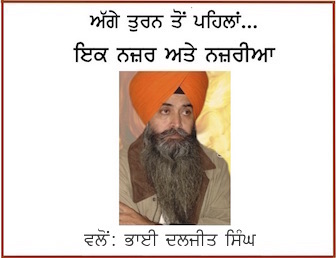Articles/Opinion » Sikh News
Hidden Details: The Discrepancies in Darbara Singh Guru’s Account of the 1986 Saka Nakodar Massacre
September 12, 2024 | By Dr. Harinder Singh
Darbara Singh Guru now acknowledges that in 1986, during the Saka Nakodar massacre, he served as ADC in Jalandhar and acted as District Magistrate and Deputy Commissioner while the regular DC was away for training. He admits that he ordered the post-mortem reports, although he previously denied ever acting as DM/DC.
D S Guru attempts to downplay the fact that the post-mortems following the massacre were conducted hurriedly under the cover of night, potentially to obscure the truth. The police firing occurred at 4 PM on February 4, with post-mortems carried out the same night after sunset and the bodies disposed of by the next morning, February 5.

Darbara Singh Guru
D S Guru claims that the full report of the Justice Gurnam Singh Commission of Inquiry is a public document. While he tries to exonerate the government, he omits that the judicial report was not submitted to the state assembly within the required six-month period following its submission date of October 31, 1986. He also fails to mention that it took 33 years of effort by the victims’ families to obtain Part 1 of the report, while Part 2 remains ‘missing’ from state, police, and judicial records. Part 1 was made publicly available by the victims’ families, raising questions about why Part 2 is missing. Moreover, even though Part 1 was submitted to the state assembly on March 5, 2001, in a secretive manner by P.S. Badal’s government, there was no discussion of its findings or submission of an action report as required by law.
It seems D S Guru is tone-deaf, interpreting opposition to his appointment as advisor to the acting president of Akali Dal as anti-Panthic sentiment from the opposition.
D S Guru selectively highlights parts of the judicial report suggesting that the S.P. operations did not obtain his permission as District Magistrate and proceeded with live police firing without it. However, he neglects several critical sections of the report:
Paragraph 32: Refutes the police’s claim that the investigation was halted due to the impending inquiry by a commission, noting that the commission was appointed on March 17, 1986. The mere appointment of a commission did not preclude the ongoing investigation of the case.
Paragraph 39: Notes that the police did not conduct examinations or proceed with an investigation. Despite a Shiv Sena procession brandishing new weapons, the administration took no steps to control the situation. Although Section 144 of the Cr.P.C. was in effect, no arrests or measures were taken to maintain order, contributing to the deterioration of the law and order situation and leading to the imposition of a curfew.
Paragraph 72: States that Mr. Sharma had been informing both the Deputy Commissioner and the S.S.P. about the gathering and provocative speeches but received no instructions to round up the speakers. Mr. Sharma also informed the S.S.P. that the mob intended to enter a curfew-bound area but did not receive instructions from either the S.S.P. or the District Magistrate.
Paragraph 73: Indicates that the mob could have been declared unlawful, and its leaders could have been arrested. The affidavits and statements from police officers at the scene reveal that the assembly was not declared unlawful, nor were participants instructed to disperse. No effort was made at the scene to arrest any leaders of the mob.
Paragraph 74: States that Mr. Sharma did not receive instructions from the S.S.P. or District Magistrate to arrest individuals intending to enter the city. Mr. Sharma had been keeping the A.D.C. and S.S.P. informed about the gathering and speeches.
Paragraph 77: Concludes that the killing of four persons and the injuring of eight was not justified. The police firing at Nakodar on February 4, 1986, was deemed unjustifiable and avoidable.

D S Guru also fails to address the findings of the SGPC’s Panel Report, which concluded that the District Administration was responsible for the unjustified Saka Nakodar police killings and the illegal cremation of four Sikh youths. Additionally, he ignores Justice Ajit Singh Bains’s PHRO Report, which identified the ADC and SSP of Jalandhar as the main culprits in the 1986 Saka Nakodar incident.

Dr. Harjinder Singh (brother of Shaheed Ravinder Singh)
Furthermore, two post-mortem reports include the names and addresses of victims Harminder Singh and Baldhir Singh, while two others are marked as “Unknown.” As District Magistrate, why did D.S. Guru not wait for the identification of the bodies before authorizing the post-mortems? Baldev Singh, the father of Ravinder Singh, reached the Civil Hospital Nakodar early on February 5, 1986, and identified and claimed the body of his son. Jhilman Singh’s body was never identified. Why did D.S. Guru allow the cremation of four Sikhs as “Unidentified & Unclaimed”? If the police acted independently in this matter, what actions did he take to address it?
⊕ ALSO READ — US Congressional Records Recognizing ‘Saka Nakodar 1986’
⊕ WATCH RELATED VIDEOS —
To Get Sikh Siyasat News Alerts via WhatsApp:
(1) Save Our WhatsApp Number 0091-855-606-7689 to your phone contacts; and
(2) Send us Your Name via WhatsApp. Click Here to Send WhatsApp Message Now.
Sikh Siyasat is on Telegram Now. Subscribe to our Telegram Channel
Related Topics: Saka Nakodar (4 February 1986), Saka Nakodar 1986




